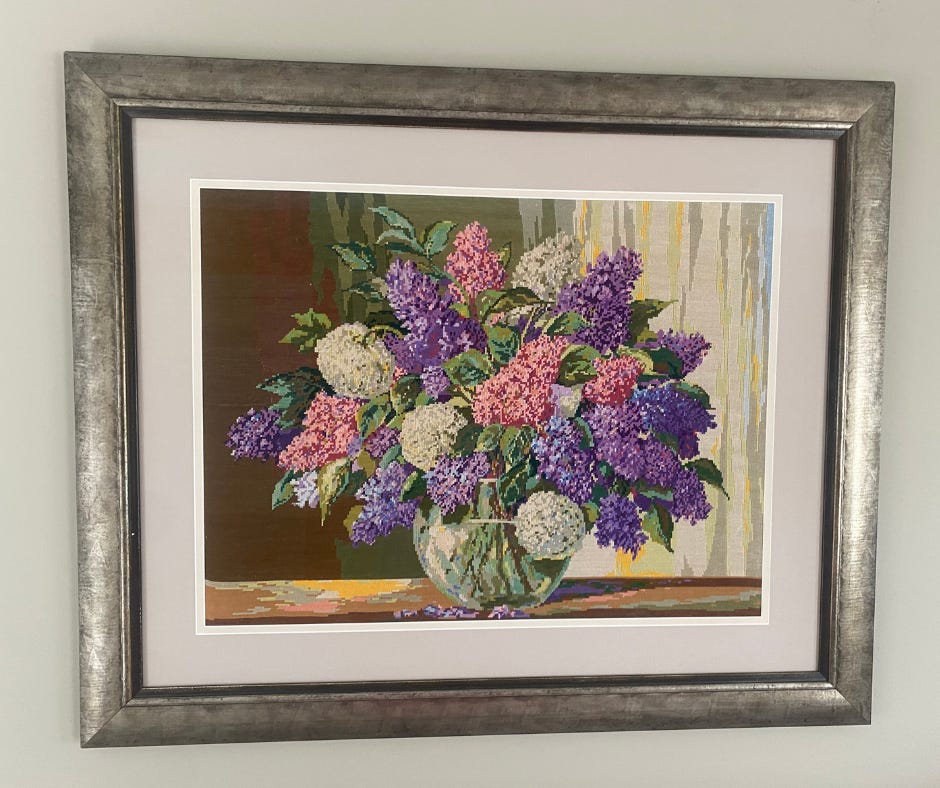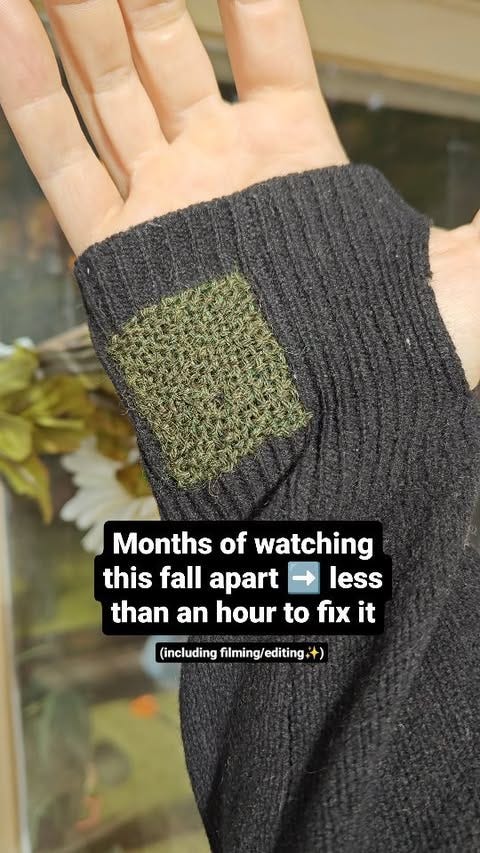The $40 Dress, the $50 Hem, and the Return of Handarbeit
Why We Need to Start Valuing the Work of Our Hands

Teaching my granddaughter to sew got me thinking about all the quiet, skilled work that women do, which rarely receives applause. If this resonates, give it a like, comment, or restack—because some threads (and stories) are too good not to share.
I found the perfect dress.
It was a Saturday afternoon, and I was combing through the racks at a local consignment shop when a silver Greek key pattern caught my eye. A Tory Burch dress, no less—A-line, flattering, and just right for the big fat Greek wedding I was attending at the end of the week. It was a little short, but I noticed a substantial two-inch hem—a tall girl's dream. With a quick trip to the tailor, I'd be good to go by Friday.
I brought the dress to Jane's shop, where she stood like a queen among mountains of tulle and sequins—wedding gowns, prom dresses, and formal wear in every shade. No one would trip down the aisle under Jane’s craftsmanship.
This was a small job. Could she squeeze it in?
After examining the dress, Jane sighed the sigh of a woman who has hemmed for too many panicked prom moms, then scribbled on a slip: $50. Ready by Thursday.
Fifty dollars. The dress had only cost forty.
Ouch.
I paused, flustered, but told myself to focus on the win: I'd scored the perfect dress, and I'd have it ready in time. I mean, it's not like I could hem it myself.
Except I used to be able to hem it myself.
Standing there, I started thinking about my old sewing machine. Had I been too hasty tossing it?
I learned to sew as a pre-teen at the Singer shop (back when I was allowed to walk a mile to the city mall unsupervised). I practiced on my mother's old metal machine—built like a Mack truck and just as loud.
After I got married, I purchased a used sewing machine and started using it. First job? Maternity clothes. There weren't many off-the-rack options for a 5'10" pregnant woman with long limbs and a professional job. My mother and I found some patterns, although fashionable choices were few and far between. The results were ugly outfits that fit well.
From there, I moved on to window treatments for our entire house, which were way easier to sew than clothes, just bulkier. Then on to Halloween costumes for my little girls.
Of course, by the time I bought fabric, notions, and trims, those homemade costumes cost double what they would at K-Mart. But I didn't care. I loved the process.
The day came when I didn't have time for sewing. I didn't have time to brush my hair, let alone anything as frivolous as fairy princess and Snow White costumes.
The machine sat neglected. Its plastic body yellowed like a forgotten Tupperware lid, and when I did pull it out, the stitches were erratic and angry. I hadn't known that sewing machines needed servicing (this seems obvious now, but I was under the impression it was a toaster with thread), and after one last move, I sent it to a landfill.
That marked the end of my sewing era, aside from the occasional reattached button or emergency hem.
My mother, who was German, referred to these domestic skills as Handarbeit or handwork. It was the kind of knowledge passed from mother to daughter, taught quietly and never applauded. Certainly never labeled as creative.
It was women's work, plain and simple.
But now, I had paid more for a hem than I had for the dress itself. And I had a granddaughter who wanted to sew saddle blankets and ear bonnets for her toy horses. It made me wonder: was it time to stitch this part of me back together?
My granddaughter, Izzy, already had a $20 battery-operated kids' sewing machine. It was adorable. It also couldn't sew through felt, flannel, or fake fur.
After a bit of Craigslist hunting and a chat with a sewing machine repair guy, I took the plunge and bought a new Singer 4423.
I was back in business, baby.
Izzy and I headed to Michaels to gather supplies for her new horse. Beige fabric for the body, white for the blaze, green felt for the eyes, and we postponed our decision on the neck rope.
We like to leave room for design evolution.
Her new horse would cost more than the two mass-produced $7.99 ones she already had, but it would be hers. Made with her imagination and with our hands.
And that changed something for me, too.
This wasn't about "practical" anymore. I wasn't sewing because I had to: I was sewing because I wanted to. For joy. For beauty. For connection.
That old word Handarbeit took on a new meaning. Yes, it was a skill. Yes, it had value. But maybe it was never just about chores and holey socks.
Maybe it was always art.
Women's work has a long history of being overlooked—unpaid, undervalued, and unseen (unless you forgot to iron it). But lately, I've started noticing something hopeful. One of my LinkedIn connections, who typically posts about her roles as a realtor and musician, has begun documenting her sewing journey. Her handmade clothes are exquisite, they fit her perfectly, and now people are asking her to sew for them.
She even started a YouTube channel.
It made me wonder: why aren't more artisans posting on LinkedIn? Why is it all "10 Ways to Increase Productivity Before 8 AM" and zero ways to stitch a neckline?
When did we decide that what we make with our hands matters less than what we do with our keyboards?
It's time to change that conversation. It's time to value the artisan alongside the analyst.
And maybe—just maybe—someone out there is looking at their old sewing machine in the closet and thinking, you know what? Let's get back at it.
What do you think?
I discovered something called “visible mending.” It reminds me of the Japanese art of repairing broken pottery with gold, except applied to clothing. Check it out!



Ilona, what a lovely story! Although I do not sew, other than for occasional mending, I greatly appreciate the work of those with the talent and perseverance to do so. For that reason I often buy clothing and other items that are handmade for their quality and craftsmanship.
I’m responding today because I wanted to recommend a book for you. It is called “The Lion Women of Tehran” by Marjan Kamali. I just finished it and came away with new admiration for women through the centuries who have worked quietly and facelessly on Persian rugs yet have never received the recognition they deserve. Nevertheless their work is coveted and displayed all over the world.The story itself is very compelling and takes place in the Iran under the rule of the Shah and later under the reign of the Ayatollahs.
Ah, there's nothing like good old fashion "Handarbeit" to soothe the soul in this madcap materialistic world.